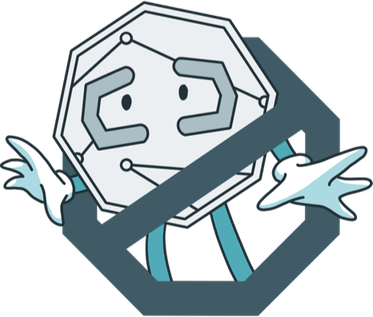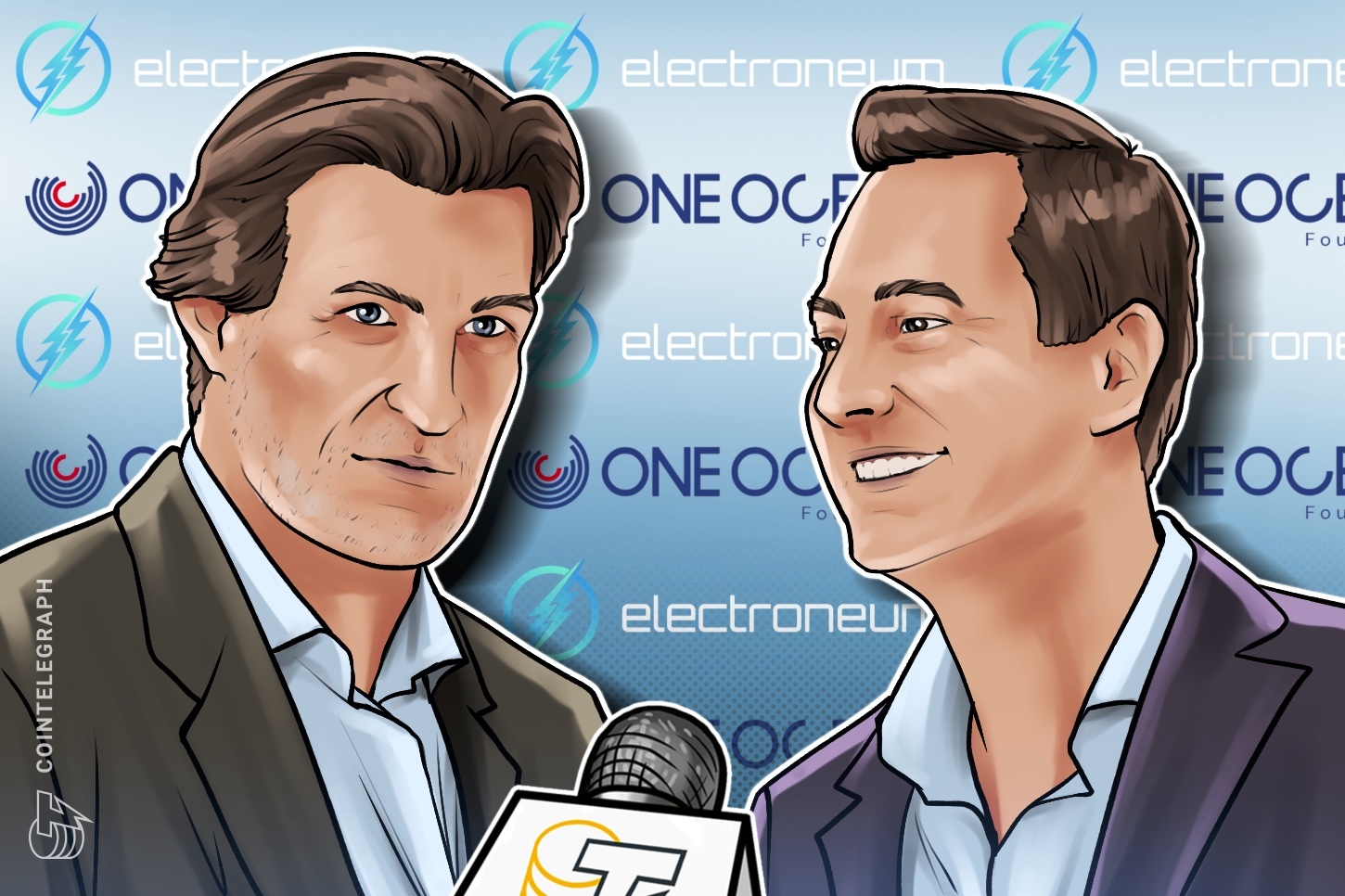Sponsored Content
The maturing blockchain industry has witnessed growing concerns around its energy usage and environmental impact. Energy-intensive proof-of-work (PoW) networks can consume as much electricity as Finland annually. Meanwhile, the carbon footprint of a non-fungible token (NFT) on a proof-of-stake (PoS) network can exceed the monthly electricity consumption of someone living in the EU.
This became an increasingly deterrent factor for those with environmental concerns and prompted efforts to build a green blockchain. A fruit of such efforts is Electroneum, a next-generation, energy-efficient layer-1 blockchain built on years of innovation. With its ultra-low energy consumption, Electroneum provides a cost-effective and developer-friendly blockchain, lowering barriers to building onchain while reducing the carbon footprint significantly.
As it prepares for a relaunch as Electroneum 2.0 with a revitalized ecosystem, the project partnered with One Ocean Foundation, an NGO with a mission that aligns with Electroneum’s infrastructure. The Foundation promotes marine conservation through global impact projects.
In this interview, Electroneum CEO Richard Ells and One Ocean Foundation Secretary General Jan Pachner join Cointelegraph to discuss the details of the partnership, the role blockchain will play in One Ocean’s operations and what to expect from the collaboration in the coming months.
Cointelegraph: What inspired the collaboration between Electroneum and One Ocean Foundation?
Jan Pachner: The collaboration was inspired by a shared commitment to sustainability. Both organizations are deeply focused on reducing environmental impact: Electroneum operates one of the world’s most energy-efficient blockchain systems, while One Ocean Foundation is dedicated to ocean conservation and regeneration.
Our mission is to accelerate solutions to ocean issues by expanding scientific research, spreading ocean knowledge and fostering opportunities for businesses and individuals to take an active role in the protection of marine ecosystems. The partnership naturally emerged from the mutual goal of driving digital innovation that creates real, measurable ecological value.
Richard Ells: I think Jan sums that up with his answer. We’ve been working with NGOs and foundations for many years as part of our “Proof of Responsibility” validator system. One Ocean and Electroneum fortuitously crossed paths at a crypto event, and we saw the idea for utilizing blockchain for good in a very demonstrable way.
CT: You have been nominated for a prestigious Aretée Premio award. Tell us how it fuels your partnership?
JP: Being nominated for the Aretéèe Premio proves that when technology and ocean conservation go hand in hand, they can deliver meaningful results recognized by the expert community. This acknowledgment motivates us to keep advancing projects that unite digital innovation with real ecological value.
At One Ocean Foundation, we focus on key areas that drive lasting change for ocean health: scientific research and conservation, business engagement and ESG, education and art and culture -— all aligned with the UN Sustainable Development Goals.
Big News:
— electroneum (@electroneum) October 17, 2025
One Ocean Foundation and Electroneum have been recognised as third-place winners at the XXII edition of the Areté Award – Excellence Award for Responsible Communication, held during the Salone della CSR and Social Innovation at Bocconi University.
The award ceremony,… pic.twitter.com/SeoghHvXz7
RE: The award ceremony has now taken place. Jan from One Ocean was in attendance, and the One Ocean/Electroneum project came in third place. We are very pleased with the result, considering there were over two dozen nominations, and our project doesn’t go live until Nov. 6.
CT: How do blockchain technology and sustainability intersect in your shared mission?
JP: Our partnership shows how technology can actively support ocean sustainability by creating transparency, accountability and measurable impact. Electroneum’s energy-efficient blockchain enhances One Ocean Foundation’s mission to protect and regenerate marine ecosystems. Through scientific research, business engagement and education, we turn innovation into concrete progress and impact projects for the ocean and future generations.
RE: Electroneum has engineered a new validator system that uses a tiny amount of electricity compared to most other blockchains. We’ve done this in response to the questioning of the entire industry’s sustainability.
One Ocean can operate Web3 and drive additional interest from new communities. We know that the environmental impact of Electroneum’s blockchain is small enough that the first project we are launching together — to support the Blue Forest project — will actually be carbon negative.
CT: How does art play a key role in sustainability?
JP: Art plays a crucial role in sustainability by transforming complex environmental issues into emotions and experiences people can truly connect with. For us at One Ocean Foundation, art is a powerful ally that combines beauty and inspiration with science and action, turning awareness into engagement. Through this dialogue between creativity and conservation, we not only celebrate the beauty of the ocean but also inspire people to protect it for future generations.
RE: Jan’s poetic description of this is so much better than anything I can say that I’m going to leave that answer entirely to him.
CT: What concrete goals or initiatives will this partnership deliver in its early phase?
JP: In the early phase, we aim to turn digital creativity into measurable environmental impact, showing how art and blockchain can work together to drive sustainability in a transparent and inclusive way. The partnership will support One Ocean Foundation’s impact project Blue Forest, focused on biodiversity and blue carbon, creating traceable contributions that deliver real benefits for marine ecosystems.
RE: Through the Electroneum blockchain, we are enabling the works of famous artists who support One Ocean’s projects to make their inspirational work available to a vast new audience. Donors can be awarded an NFT, and NFTs can also be sold to collectors who, therefore, become donors. Many NFT collectors would love to own work by a major conventional artist, and the proceeds can be directly delivered to a One Ocean project (in this case, the Blue Forest project).
CT: How does Electroneum’s Proof of Responsibility model support environmental or conservation-focused projects like One Ocean Foundation?
JP: Electroneum’s Proof of Responsibility provides a trustworthy, sustainable and accessible infrastructure that turns digital engagement into real-world environmental impact, making it an ideal technology partner for conservation-driven initiatives.
The future is green, and so is the future of blockchain. 🌱
— electroneum (@electroneum) October 10, 2025
While others are stuck on energy-intensive models, Electroneum 2.0 is built different. Our Proof-of-Responsibility protocol opens up a massive niche: the eco-conscious digital economy.
We offer:
✅ Fee-less, instant…
RE: Electroneum’s blockchain model is unique. The architecture of our validator servers means we use many orders of magnitude less energy than nearly all other blockchains. It makes us faster and cheaper to operate on. Electroneum has positioned itself as the blockchain of choice for environmentally conscious brands and developers.
In this first project, we have created a platform that allows brands and non-profits — like One Ocean Foundation — to make NFT purchases accessible to completely non-technical people. The platform plugs into the major NFT marketplaces and also has the ability to distribute and assign NFTs to users who don’t yet have a crypto wallet. These users can migrate to their own wallet once they take that journey onto the blockchain for the very first time. This introduces new users (both private and corporate) into the blockchain ecosystem, where we will take them through the process of setting up an Electroneum wallet.
One Ocean is the first foundation to make use of this platform, and you’ll be able to see it when it launches publicly at the Miami Blockchain Futurist conference on Nov. 6 — with One Ocean, Electroneum and their major NFT artist on stage.
CT: From One Ocean Foundation’s perspective, what role can Web3 play in protecting marine ecosystems?
JP: Web3 offers a powerful new toolkit to protect marine ecosystems by combining transparency, community engagement and innovative funding mechanisms. From One Ocean Foundation’s perspective, it provides an alternative way for people to actively support one of the most urgent causes of our time (safeguarding the planet) while ensuring that contributions lead to real, traceable impact for the ocean.
RE: One Ocean, via our NFT collaboration, is driving valuable funding directly into sustainable projects. This marks One Ocean’s first “toe in the water” in using the environmentally friendly Electroneum blockchain.
CT: What can the Web3 community and environmentally conscious users expect next from this partnership?
JP: Exciting initiatives are on the horizon, turning digital innovation into tangible environmental impact. In the next phase, our partnership will deliver projects that support the One Ocean Foundation’s mission, providing transparent and traceable ways for users to actively contribute to the protection and regeneration of marine ecosystems.
RE: We are in discussions around a range of projects, some of which involve storing data and milestones in an immutable, publicly accessible way. Additionally, a simple-to-use platform is also being discussed, which allows donors to view the real-world results of their funding, recorded for future analysis and reference.
Disclaimer. Cointelegraph does not endorse any content or product on this page. While we aim at providing you with all important information that we could obtain in this sponsored article, readers should do their own research before taking any actions related to the company and carry full responsibility for their decisions, nor can this article be considered as investment advice.


